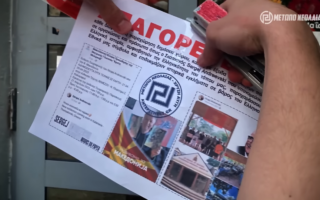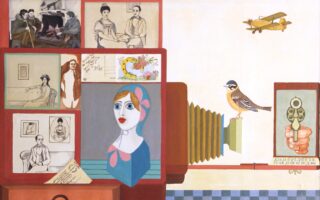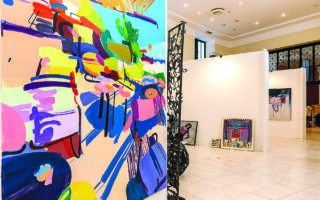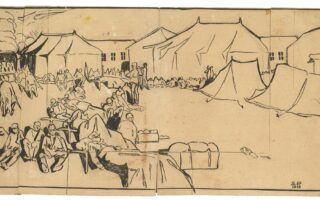Elefsina in the eye of the beholder
Cultural Capital’s large-scale visual arts exhibition comments on the destruction-recovery cycle
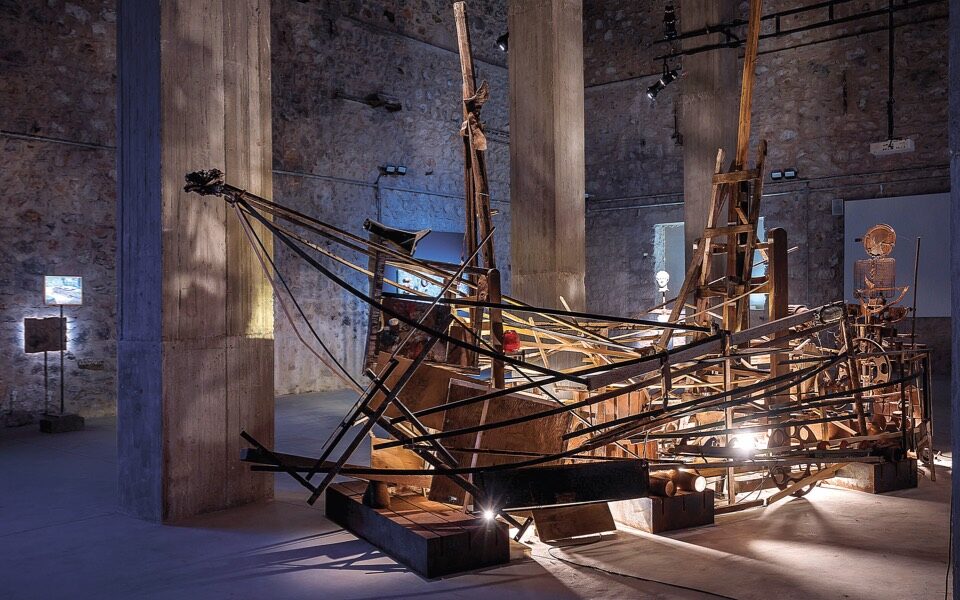
The trip from central Athens to Elefsina and the West Attica town’s Old Olive Mill takes me through a hot, “post-industrial world in transition and looming uncertainty,” just as the note on the exhibition I’m heading to promises. The show is titled “Elefsina Mon Amour: In Search of the Third Paradise,” and it is the headline visual arts event of the 2023 Cultural Capital of Europe.
Going through the main gate into the old industrial complex, I spot a big green sign reading “Old Factory, New Capital” stretched above the entrances of its three warehouses, which no longer resemble the abandoned spaces that once hosted iconic solo art exhibitions. They have been beautifully restored and are safe and accessible, just as they should be, especially for a show with such a modern curatorial point of view.
In all, 16 artists from nine countries explore Elefsina’s public and private past and present for ‘Elefsina Mon Amour’ in a bid to reveal the traumas it has been through and the hopes for its future
Exploratory and experimental works of art seek to chart life in Elefsina, starting, of course, with the town’s indelible relationship with the sea. Warehouse 1 dives into the endeavor with different mediums, while the central piece, the audiovisual installation “Sounding the Silent World” (2023), examines the wrecks of Elefsina’s unofficial ship graveyard. The piece by Marina Gioti, who has spearheaded a research project on the problem of shipwreck pollution, employs different underwater imaging techniques, in combination with archaeological methods to interpret the recent past and know-how from environmental science and marine biology.
A wreck also forms the centerpiece at Warehouse 2, where photographer and visual artist Dimitris Tsoumplekas is showing his “Shipwreck with Spectator – Self-Portrait” (2023), a piece about the erosion of physical matter. In the same area, Igor Grubic uses photography and film to comment on Elefsina’s working-class history. The artist met with men and women who work in the area’s industries and photographed their stories in their place of employment for the piece “How Steel Was Tempered” (2019), and animated film that includes photographs taken at nine big factories in the artist’s native Croatia.
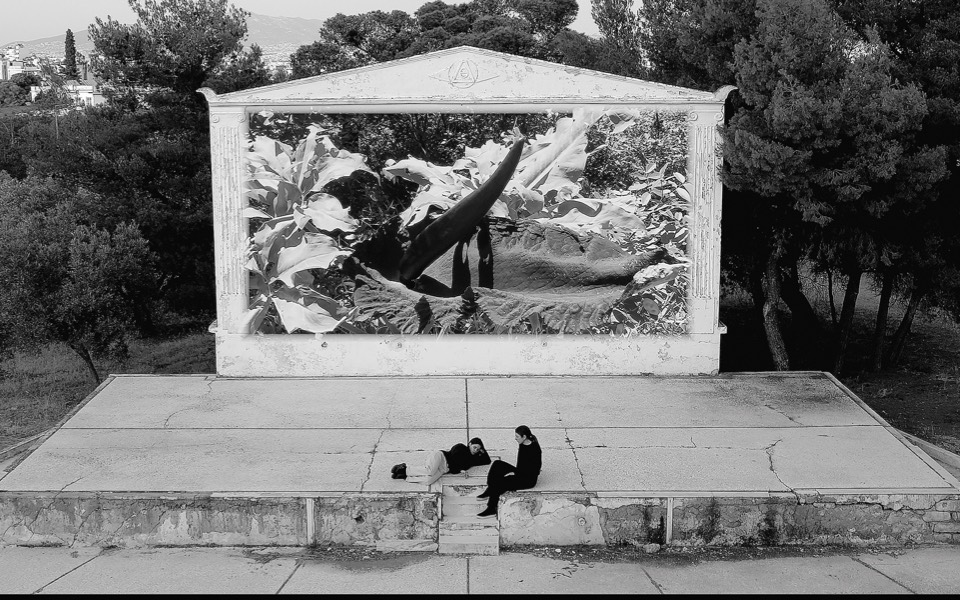
Warehouse 3 takes an even close step toward Elefsina’s people by showcasing the witnesses of its collective memory. Maria Christofides’ “Yianna” (2023) is a three-channel 16mm film essay the artist began in 2018 when she met the title character outside her makeshift home in nearby Megara. A seamstress and medium by trade, Yianna’s life was one of pain and grief.
Different seamstresses feature in Christofides’ “Some Shells Less” (2023), a large-scale installation made up of the cloth sleeves for 155mm shell casings produced by the Pyrkal munitions factory in Elefsina.
In all, 16 artists from nine countries explore Elefsina’s public and private past and present for “Elefsina Mon Amour” in a bid to reveal the traumas it has been through and the hopes for its future.
As the show’s curator and artistic director of the National Museum of Contemporary Art Katerina Gregos said in her introductory speech at the exhibition’s recent inauguration, Elefsina’s fate has been similar to that of many other post-industrial cities, but the different communities that have put down roots here, refugees from past centuries and migrant laborers from this one, have endowed it with a less common sense of intimacy.
The exhibition is a contemporary portrait of Elefsina that invites viewers to see the town and the broader Thriasio Plain through a different sociopolitical lens. In Alain Resnais’ emblematic film “Hiroshima Mon Amour,” which inspired the title here, love is what signals the new beginning after complete devastation. Here, it is art that serves the role of uniting memory and experience, past and present.
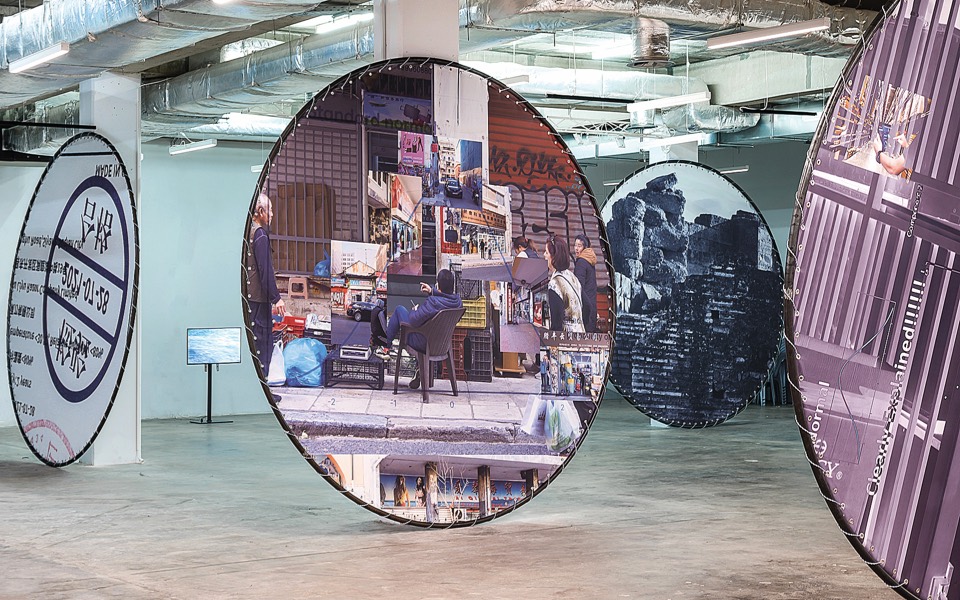
In the Old Olive Mill’s courtyard, Adrian Paci led a group of Elefsina residents to create a monument to the human experience, while at the X-Bowling Art Center, Aglaia Konrad’s solo photography exhibition looks at the modern urban landscape, its architecture and its infrastructure.
As was the case with the ancient Eleusinian Mysteries – which inspired the structure of the Cultural Capital’s program – where the truth was revealed to the initiates, “Elefsina Mon Amour” provides much food for thought. And while it may not point the way to a rewarding afterlife, it does help us find our bearings in the stark landscape of modern life.
The exhibition runs until September 30. To find out more about the interesting roster of events for the Cultural Capital of Europe, visit 2023eleusis.eu.


